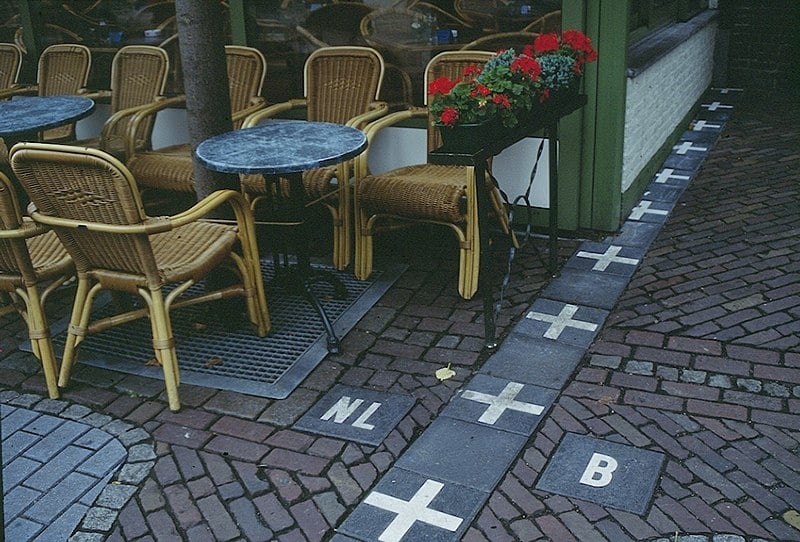
Image credit: Jérôme
An international border is typically clear cut, with the usual procedures of passport checks and security screenings enforced. In Baarle however, you can waltz between Belgium and Netherlands simply by stepping over the marked borders, or even technically be in both countries at once.
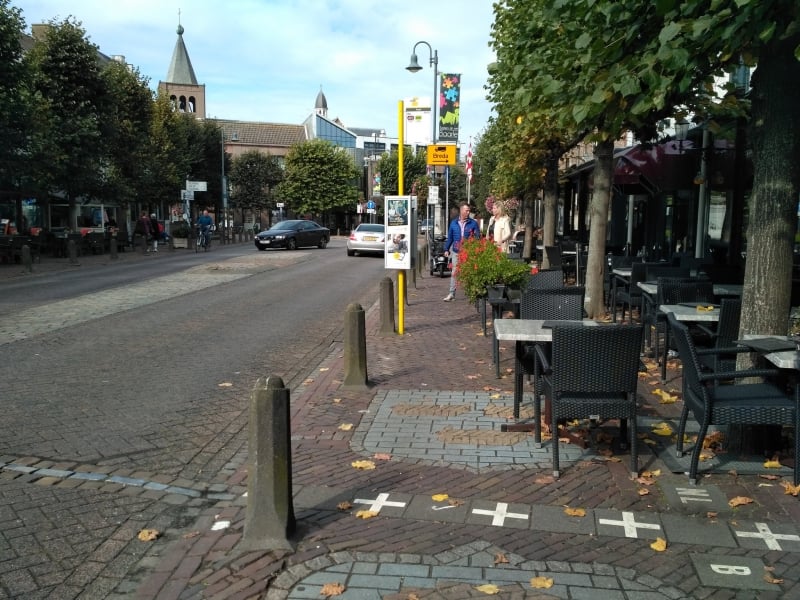
The border town of Baarle is made up of Belgian exclaves within the southern part of Netherlands. And within the bigger exclaves there are also a few Dutch enclaves! The Belgian areas are called Baarle-Hertog, while the Dutch ones are called Baarle-Nassau. With a town divided in such a confusing manner, one can easily be unsure of which country you’re actually in while walking down the street.
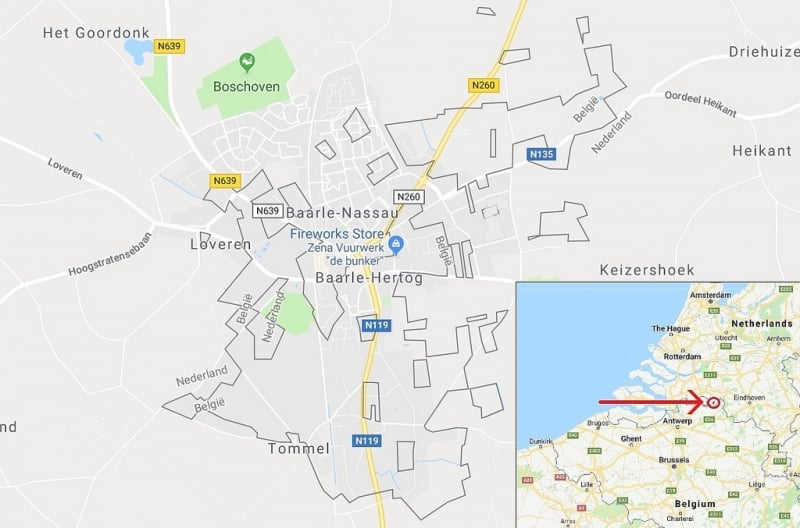
The border situation. That’s mind-boggling!
History
To cut a long story short, it all started from two aristocrats who were in charge of the local areas around the present-day Dutch-Belgian border. To resolve a potential conflict, the Duke of Brabant ceded a number of land parcels to the Lord of Breda, and the former kept the remaining that were earning him cash from rents. This happened in 1198 during the Middle Ages.
Over the years, the respective lands were passed down from generation to generation. Fast forward to 1648, the Treaty of Westphalia was signed by various European powers after their Thirty Years’ War to demarcate their borders, paving way to what we see on the world map today. The land parcels in Baarle were thus allocated to present-day Belgium and the Netherlands according to their original owners, the Duke of Brabant and Lord of Breda respectively, forming a border town whose history is as complicated as its planning.
So, which country do the residents actually live in?
With such a high concentration of international borders within the town itself, it is not uncommon to see them cutting through middle of the streets, shophouses and even residences. So how do people actually determine the country that the houses are in? It depends on the location of the front door along the street.

(Left, Right) Image credit: Dan | All houses in this town are labelled with flags which indicate the respective countries they’re in.
There have been cases where home or business owners exploited the loopholes arising from their properties being literally located on the border, to get around certain property laws that exist in one country but not in the other. In some cases, such action could mean personal economic gain by choosing a country that charges less on taxes! So what do they do? They simply shifted their front doors to be in the other country!
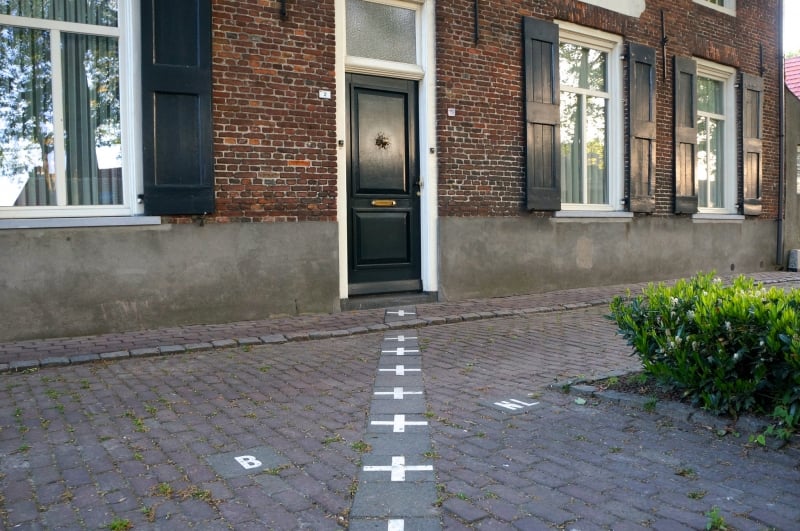
Image credit: Dan | And what if the border actually runs through the front door? You guessed it… it has two addresses, one for each country!
Different Laws
People here have been really creative in taking advantage of having two different jurisdictions within their town. For example, smuggling was rather rampant from the end of World War II till the early 1990s, a period when free trade wasn’t yet established among European nations. Groceries, everyday products (especially butter) and even animals were smuggled across the many borders between the two countries. Due to these complicated borders, it was essentially a cat and mouse game between smugglers and customs officers.
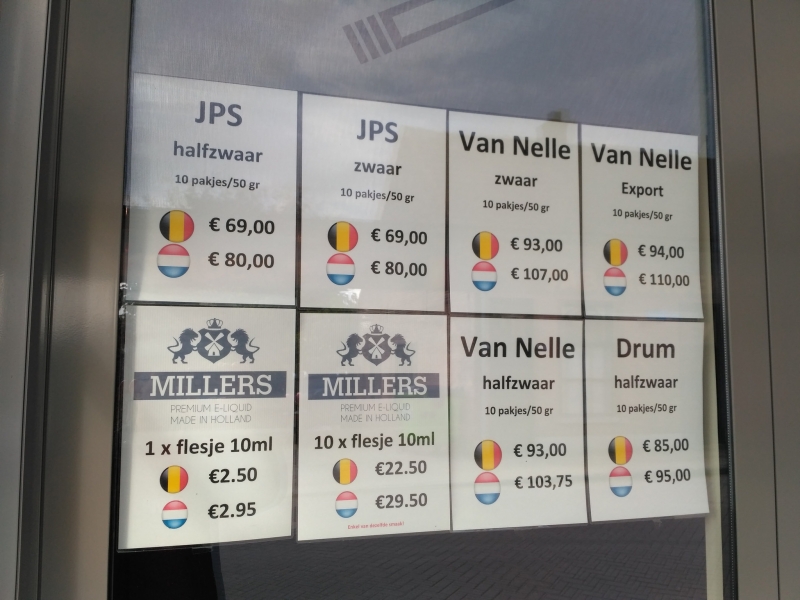
Different prices quoted for Belgian and Dutch citizens. Out of curiosity, I asked a Belgian friend about this. Apparently, the Dutch are taxed more for tobacco compared to Belgians!
Other peculiarities have also arisen due to the existence of different jurisdictions. For example, there was a law dictating that restaurants on the Netherlands side had to close at a certain hour. So when it was closing time, patrons simply moved to the Belgian side of the restaurant to continue their meals. In a similar fashion, employees of a former bank sitting on the border would simply slide documents to the other country whenever tax inspectors came over, because they have no right to enforce the law outside of their own country.
Today, Dutch citizens would purchase pyrotechnics from fireworks shops that sit on Belgian land and smuggle them back to the Netherlands with minimal effort, especially towards the end of the year. That’s because the Netherlands have very strict firework laws that only allow people to set fireworks on New Year’s Eve.
Seeing Double
Essential amenities such as the local church, post office to the police station are doubled to serve the two different communities. Shops, restaurants, pubs and supermarkets are also clearly labelled as either Dutch or Belgian. Double the fun or double the trouble? You decide.
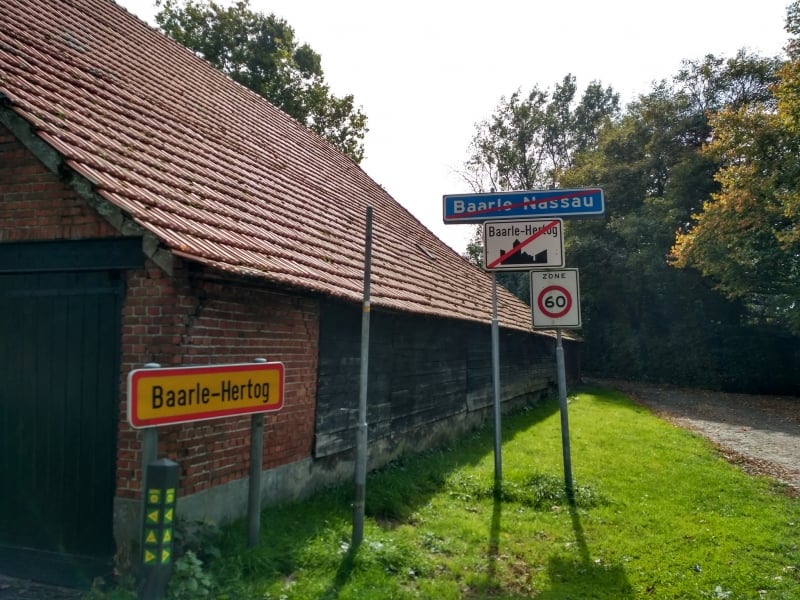
Double city name signs!
Things to do
Head down to the Tourist Information Centre and grab a copy of their not-so-imaginatively-named tourist magazine, the Baarlezine. The peculiar border situation is what puts the town of Baarle on the world map, so locals recognise the need to cater to tourists. The Baarlezine provides detailed and insightful information about the history of this place, as well as places of interests dotted around the town. It’s also a useful tourist guidebook for sightseeing and nature around the area.
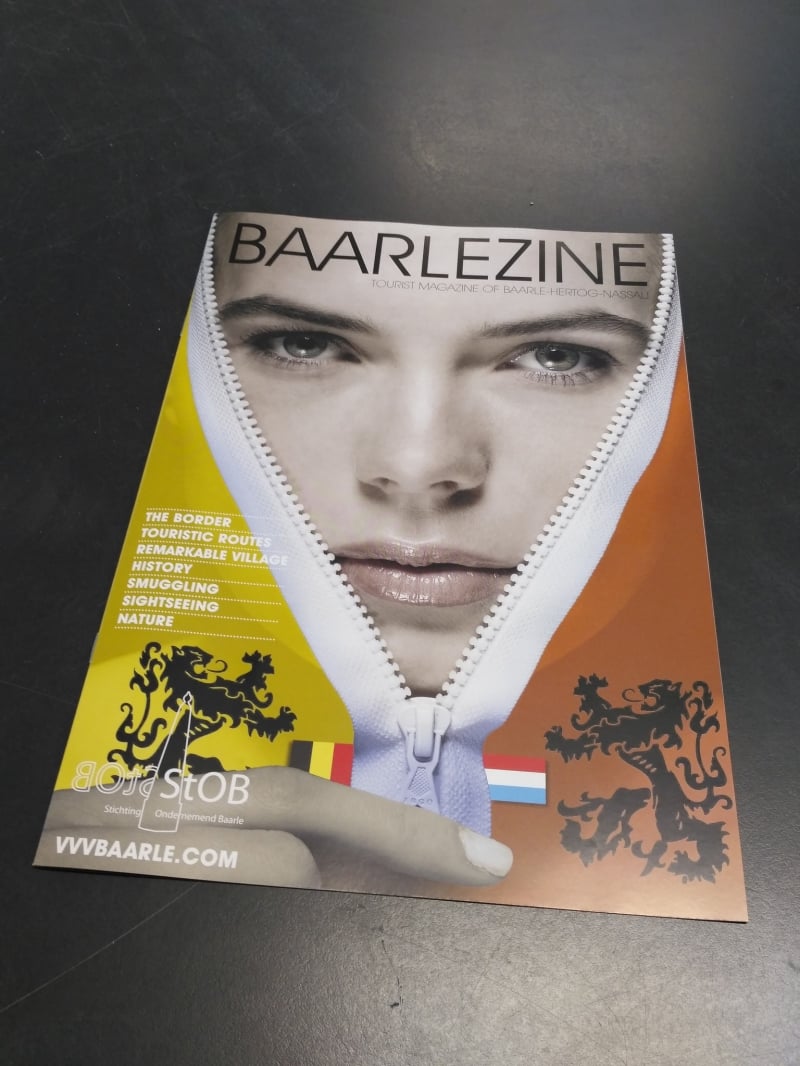
Wander along the streets of Baarle and try not to lose count on the number of times you cross the international borders. This particular town is remarkable in how different communities are able to live harmoniously; the interaction is pretty much intertwined regardless of nationalities. The world would be a much better place if we have more places like this!
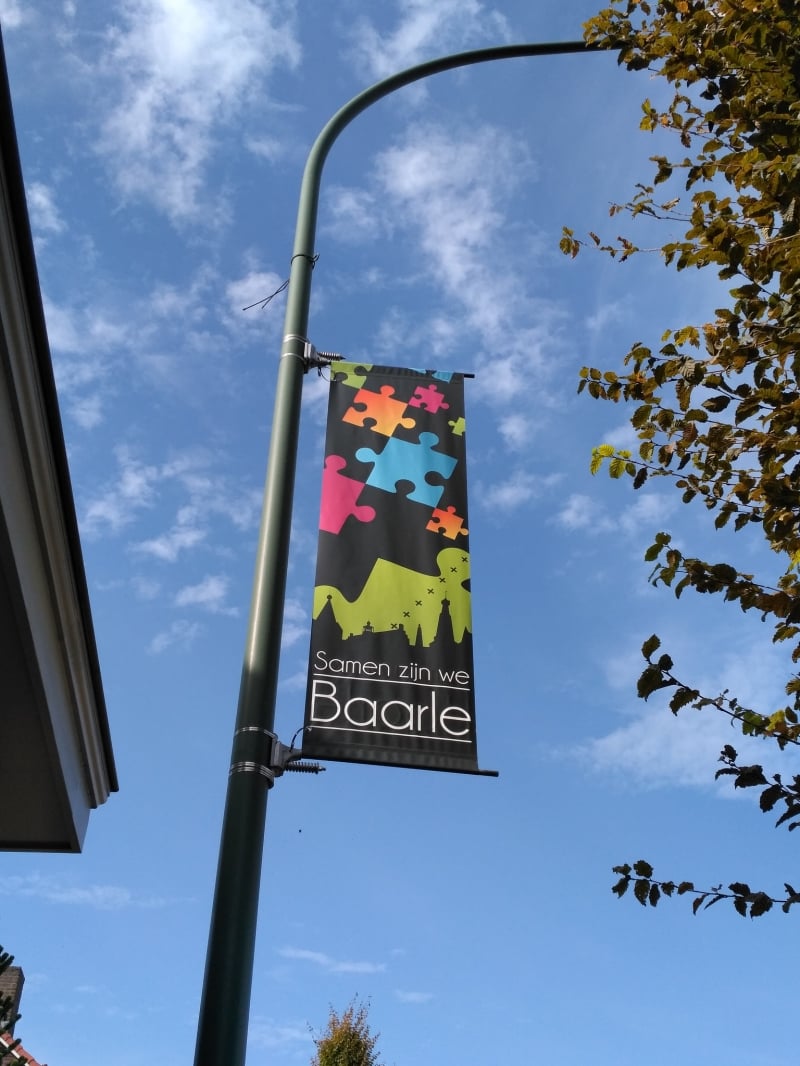
Baarle, a one-of-a-kind puzzle masterpiece!
Don’t forget about photo ops as the international borders are clearly demarcated on the streets. Show the rest that you’re physically in two countries at the same time, which is usually an impossible feat back home.
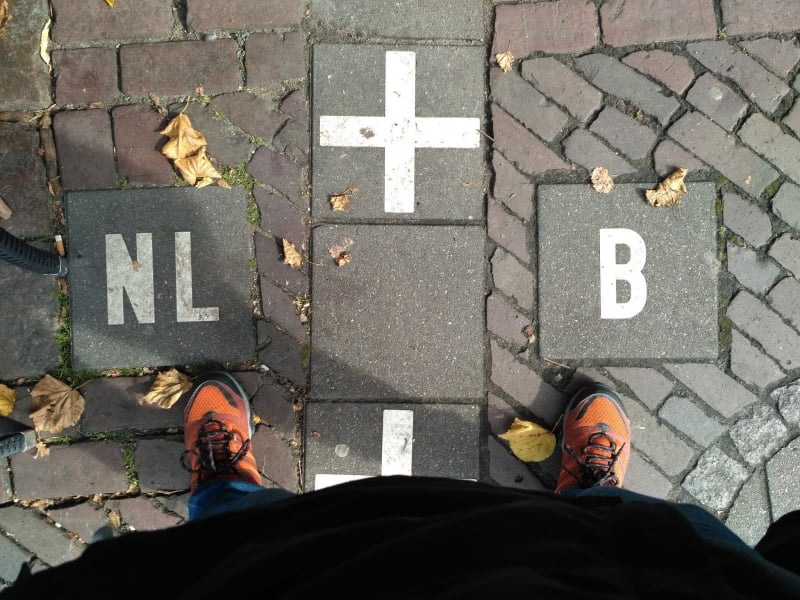
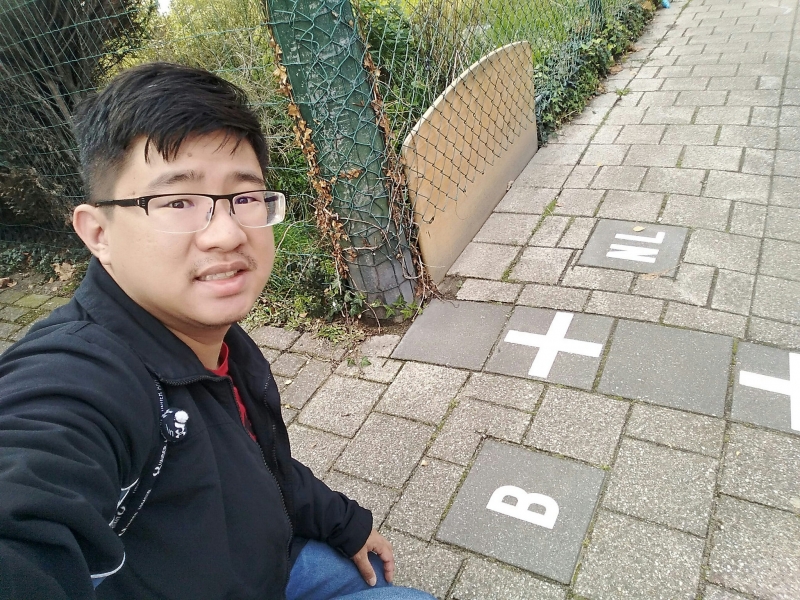
Getting there
Baarle is a small town that’s slightly off the main routes. However, it is reasonably accessible via public transport. From the Belgian side, take the hourly train from Antwerp Central railway station and alight at Turnhout, the end of the line. From there, bus 460 brings you right into the town.
From the Netherlands, board bus 132 which departs from Breda Central railway station. It will pass by Baarle before heading back to the Dutch side again towards Tilburg.
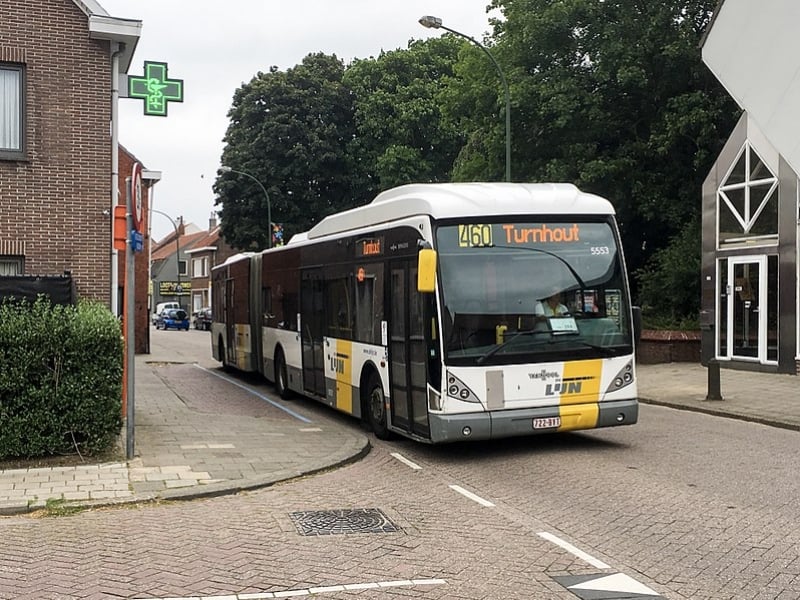
Image credit: Larsvr6
One of the cross-border bus routes to Baarle. And did I mention? Cross-border jam is non-existent!
If you happen to pass by Belgium and the Netherlands, Baarle is worth a day’s visit. This is one of the very few places in the world where you could literally roam between countries hassle-free without the need of showing your passport. Being physically present in two countries at the same time? That’s definitely one for the Gram.




